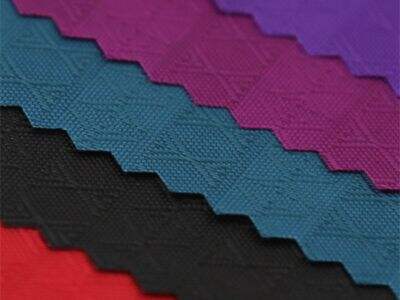There are so many fabric types to consider when deciding the right one for your project. Two of the most common, which you’ve likely heard about, are nylon and ripstop nylon. But what are the key differences between these two fabrics? Which is better suited to what you need? Let’s dive deeper into these fabrics to familiarize with them and to help you make the right choice.
The Benefits of Ripstop Nylon.
Ripstop nylon is a type of fabric that is made by weaving nylon threads together in a special way. This crosshatch creates a grid, making ripstop nylon significantly stronger than flat nylon. The nice thing about ripstop nylon, though, is that if it does get a little tear it is far less likely to grow larger. That is due to the structure of the fabric. The lightweight nature of ripstop nylon fabric makes it easy to carry around. It also repels water, which makes it a great option for outdoor equipment such as tents, backpacks and rain jackets. And you can get ripstop nylon in lots of bright colors and fun prints, which can then be used to make fashion projects where you want to be practical but also look good.
Nylon vs. Ripstop Nylon
Nylon is in high demand with a lot of people using it for various purposes. Because it is strong and durable, it is found in all kinds of things, from clothes to luggage to car parts. But nylon isn’t without its strength issues. It tears easily, and when a tear begins, it can develop further and rapidly spread. Not great if you need something that will last a long time and not fall apart on you. Ripstop nylon, however, is specially designed to prevent tears from spreading. This way, if you have an accident and get a little rip in your fabric it won’t ruin everything as it was before. Also, ripstop nylon is typically more water-resistant than regular Nylon fabric and has a lighter weight, making it a reliable option for many outdoor activities.
The strength of ripstop fabric come from how it’s constructed
Ripstop nylon gets its strength from a unique weaving pattern. The traditional method is to weave long threads tightly horizontal and vertical on a looms creating the nylon grid types fabric. But ripstop nylon uses a trick that's a bit of genius where thick nylon threads are woven with thin nylon threads in a checkered pattern. This forms a dense grid of squares supported by the thick threads. In ripstop nylon, if a tear does occur, it is less likely to spread than it would with normal nylon because the thicker threads help keep the edges of the tear together and prevent it from becoming more severe. That unique design is also what makes ripstop nylon so special and useful for a wide variety of projects.
Which fabric is best for your project?
When you are having to choose between nylon or ripstop nylon, consider what you need for your project. But if you need a fabric that is strong and durable and can stand up to a lot of use, then nylon ballistic fabric is a good option for you. That said, if you are looking for a fabric that is specifically designed to stop tears and rips from spreading, then ripstop nylon is much better suited. Additionally, if you want a strong, water-resistant material for an outdoor project or a fashion project, then ripstop nylon would be your best bet. Always understand your project requirements to select the right option.
How to Make the Best Decision for Your Needs
Ultimately, it comes down to what you need to do with your project as to whether nylon or ripstop nylon is the right choice for you. Gaining an insight into both the advantages and obstacles of various materials is very crucial to assist you determine what material to ultimately use, so be sure to do your research. SULY Textile Wide range of high quality fabrics, including nylon, ripstop nylon or any fabric combination you could need. You designing outdoor products that have to be rugged and fluffy or fashion styles that desire something chic – you do you, we got the materials for you. We have the numbers for you to call us up and learn about our fabrics and how we can serve you when you are working on your next project.

 EN
EN
 AR
AR
 BG
BG
 HR
HR
 CS
CS
 DA
DA
 NL
NL
 FI
FI
 FR
FR
 DE
DE
 EL
EL
 HI
HI
 IT
IT
 JA
JA
 KO
KO
 NO
NO
 PL
PL
 PT
PT
 RO
RO
 RU
RU
 ES
ES
 SV
SV
 TL
TL
 ID
ID
 LV
LV
 LT
LT
 SR
SR
 SK
SK
 UK
UK
 VI
VI
 HU
HU
 TH
TH
 TR
TR
 AF
AF
 MS
MS
 GA
GA
 CY
CY
 HY
HY
 UZ
UZ




